From 1986 through the early 90s Turner Scott Van Blarcum was easily the most recognizable, outspoken, memorable, and talked about local singer and figure of that that era. During those years Sedition became one of DFW’s earliest underground-breaking Metal bands as they helped this area’s Metal scene reach an all-time peak. I sat down with Turner one afternoon in March at the Bar Of Soap and we reminisced about those good ole band days he experienced with Talon, Sedition and Pump’n Ethyl. We even rapped about his enormous bone collection that would lead to him designing stage sets for the bands Ministry and Cypress Hill. He also talked in depth about that infamous night back in 1991 when he had an unforgettable confrontation with Nirvana’s Kurt Cobain (RIP) at Trees in Deep Ellum.
When did you first get into metal? What were some of the early bands that were an influence on you?
I was listening to Black Sabbath and Kiss and this and that. But, fucking… I gotta give props to Casey Orr man. Rigor Mortis dude… Haha! He turned me on and fuckin’ got me going… opened my mind up. That’s when we all started fuckin’ getting harder and faster.
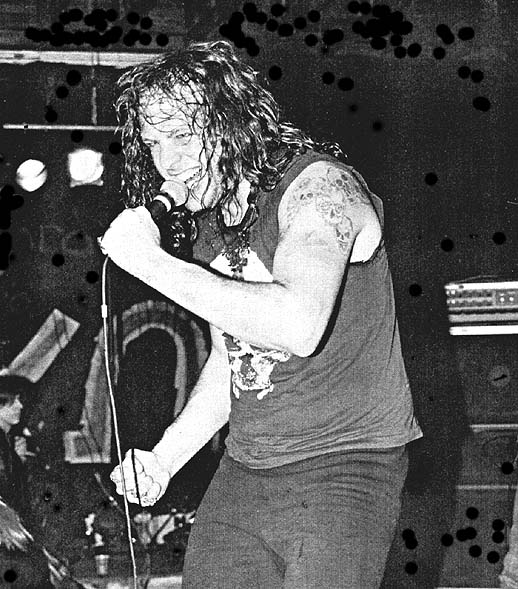
Right, I agree… I mean I was always into the older stuff, too, until I started hanging around with those guys.
Yeah man, he turned me on to Motorhead, Riot, and Destruction and a lotta bands. Hey, Rigor Mortis is my influence.
So I know you were a drummer there for a while. Were you ever actually in any bands?
Oh yeah man, I played in bands. I played with my brother’s country bands. Me and Mike Scaccia did this uh… I think it was… I can’t think of the guy’s name. But anyway, we played with this Elvis impersonator cat. It never got off the ground… but that was about it.
Ok, so I remember it was probably around 1984 when you moved over there off of Hard Rock Road in Irving. You formed a new band with brothers Pete (guitar) and Phil (drums) Lee. Hard Rock Road became the temporary name for the band. That was when you first decided to become a singer. Do you remember what made you just say, “Man, it’s my turn to get up there and I wanna become a front man.”?
Well, I think I came to the rationalization that I was a shitty drummer… and I wasn’t getting any pussy… Hahaha! I figured I might get laid if I started singing…. Hahaha!
Y’all started out playing mainly covers in that band right? Like Alice Cooper, Steppenwolf and Black Sabbath right?
Yeah and Dio, Iron Maiden, and then we started doing Metallica right when Metallica started fucking poppin’.
Do you remember when y’all decided to change the name of the band from Hard Rock Road to Talon and started working on original songs?
Yeah, that was the high point. That was probably one of the best gigs we did, man. We opened up for you guys at New Year’s Evil … with Gammacide, Morbid Scream… I got the flier still on the wall. Anyway, we changed the name to Talon in 86/87. We were still doing covers but fuckin’ uh… ya know we started writing original music. But by the time Sedition rolled around it was all originals.
I know you started with Pete Lee (guitar) and Phil Lee (drums) and then you added Eddy Carter (bass), right?
Yeah, Eddie Carter was the original bass player. Then we got some kid… red-haired kid from Waco named Scott something… that was near the end of it. And Mike Dunn on drums, I forgot Mike Dunn joined up after Phil left… ya know everybody fell apart.
When you guys decided to change the name to Talon and go heavier, that was around the same time period after Slayer’s “Reign In Blood” came out and the underground thrash scene was starting to kick in. So do you think you guys were at the right age and right there at the right time to go along with that movement? Would you agree with that?
Oh fuck yeah… we fell right on in man. Also, Punk Rock started crossing over into metal… D.R.I. and all of that.
You released a demo under the name of Talon. What were some of the songs, lyrics and subjects on that demo?
I wrote one about Charles Manson. “Summer Of Hate” was the name it. There’s lines like uh… I actually took it from the actual words of Charles Manson right… that book about him talking about himself. {Doing an impression of Manson with his voice… Turner then begins to give me some lines from the song} “At the age of thirteen I raped the Preacher’s daughter and choked her little brother for snitching on me.” … Hahaha and that kind of shit. One song Pete Lee did called “Pestilence” was bad ass… he sang on that one. We were fuckin’ writing about all kinds of crazy shit. We didn’t start getting political until Sedition hit. That’s when we started seeing everything.
I am sure you remember the Deep Ellum scene back around that time. It was a lot different than it is today. There was a big Punk scene going on in some areas. There were also the more trendy types of bands like Edie Brickel and The New Bohemians in other parts of Deep Ellum. But there was no metal scene at all at the time. What are some of your memories back then as metal first started making its way into Deep Ellum?
Shit man, I will never forget the first time I saw Rigor Mortis play at the Circle A Ranch, man. That was before you joined the band and it was still a three-piece band. Man, that night was just intense, ya know? I had never seen all of that shit before. It blew my mind. I knew I was at home. That was when me and Mark Oberlander (RIP) started doing a sound company and running sound down there. But the most intense show that I saw was Rigor Mortis and Samhain. When Rigor Mortis played the cops showed up. The cops were outside busting everybody. Then when Samhain came on and they had two songs left, the cops came in fully armed, riot gear, Batman shields, all that shit and they stopped the show. But I have to say the best one we ever did was with you guys at the Arcadia Theater man… New Year’s Evil. That was the bomb! Do you remember that guy Gonzo? That was his nickname… we can say this because that was his nickname. He came up to me that night and said, “Man, I sold over 350 hits of acid tonight. We’re gonna have one hell of a party… I made a lot of money!” I was like, “Right on, now I can fuck with these motherfuckers.” It was fun man… that was the bomb back then. That was a great gig too, man. That night… fuckin’ Mike and Casey came up and played and Phil Lee sang a GG Allin song… “Now We’re All Gonna Die”.
Do you remember when and why you decided to change the name from Talon to Sedition?
Yeah, because when we released the Talon cassette there was a band in Europe called Talon. That’s when me and Pete Lee got our publishing company set up and we were trying to get the name copyrighted. Then we found out somebody else had already released a record under the name… some Glam band from Germany or something. So we had to change the name and the name Sedition just fit, because during this time period, ya know, Ronald Reagan was fucking things up and it was just a mess. It was time to secede. I used to say, “Man, if Texas would secede from the Union, I would fight every day and wouldn’t take a lunch break… Hahaha!”
After the band changed the name, you recorded two demos as Sedition, right?
Yeah, that was in ’87 and we recorded it out in our driveway in a mobile studio. To me the first Sedition tape… we call it “Sedition White”… because it was white and just said “Sedition”. That had only like 4 or 5 songs on it… that tape was the bomb to me. It had “Road Kill” on it, “Sedition”, “Product of Your Faith” and uh… I can’t remember the rest of ’em. Anyway, that was the shit! The second demo we did at Crystal Clear Studio with Keith Rust. I think that was also in ’87 around the same time period. We didn’t last very long, ya know? It sure seemed like a long time though.
When did Mike Dunn come into the band and replace Phil Lee on the drums?
That was in 87′ after Phil left. Mike Dunn did all of the Sedition stuff. Eddie Carter (Bass) was on the Talon and both Sedition demos. Then he quit ’cause him and Pete were fightin’ man, ya know? That was the whole deal. That is why Phil quit too… his brother… Hahaha! And that’s why I quit too! You can print that. I don’t give a fuck.
People fear death even more than pain. It’s strange that they fear death. Life hurts a lot more than death. At the point of death, the pain is over.
– Jim Morrison (The Doors)
How would you describe yourself back then as a singer and your stage persona?
Pissed off… Hahahaha! Pissed off, man… but having fun, though… fuck we had a blast back then. I don’t know man… it’s kind of hard to say. I know that at that time period, man, music was changing… there was change in the air. Punk Rock was crossing over into Speed Metal… Speed Metal was crossing over into Punk Rock. Yeah, I’d say I was pretty pissed off. I didn’t like what was going on with the government and to this day I don’t. I definitely had an attitude back then… Hahaha!
You used to take knives or swords or both on stage back then and cut your arms during the show. Was that something you thought about doing or did it just come out one night on stage?
No, actually, man, where I got that from is fuckin’ I remembered when Mike Scaccia and Rigor played at the Circle A Ranch, Mike carved an A on his arm. No, I’m sorry, somebody else did it to him. I thought… “Man… Fucking A!” Then, ya know, we all carved A’s on our arms. Then we started playing Tick Tack Toe… me and Big Jim Dolan, we were always playing with knives, man, ya know? Back then… do you remember that shit, man? … if it was your birthday everybody got beat to ever how old you were. Dog piled… taking a beatin’… playing Tick Tack Toe with knives…that’s where it all started. But carving an anarchy symbol on my arm, that’s where my mind was, ya know? Anarchy… and it’s still there too. It’s just the difference is… I’ve mellowed out a lot. Hey, you gotta pass the guns down and let somebody else do it. Let some young bucks come up and kick some ass!
What are some of your best memories of that time-period back then and some of your favorite places you played at?
Man, I thought the Tombstone Factory… regardless of what everyone wants to say about Jerry Warden… that was the shit! That was about as close as fuckin’ gettin’ to Hardcore… Punk Rock… Metal as you can get, man… and I fuckin’ dug it. It was alive… it was fun, and man… fucking hot chicks… it was all good… Hahaha!
It seemed like there was always some crazy shit happening at shows back then. Is there any wild shit that happened at any of y’alls shows that really stands out in your mind?
Well, not that much with Sedition, but with everybody else…Hahaha! What I would say sticks out in my mind is when that motherfucker stabbed you in the back at fuckin’ Goddamn Joe’s Garage. That was pretty much the highlight and the peak of stupidity.
Yeah, it was… and Harden getting stabbed that night too and also Dave Spivey. Y’all beat the shit out of that dude that did it and Shane ran over him in his truck… remember? Hahaha… That was some crazy shit…
Hahah… That was it… that was the highlight.
{After pondering for a second to realize how funny it is that my highlight in life was almost getting murdered… I continue with the interview} Soooo… when and why did Sedition come to an end?
I had had enough… I couldn’t fuckin’ take it no more. We couldn’t replace Eddy Carter. The truth of the matter was, when Eddy Carter and Phil Lee quit the band, that was it. That was the band. And everybody had problems with Pete Lee because of his attitude and this and that. There was no replacing Eddy Carter and the reason why he quit was that Pete was all about money. And what money? What money did we make? It was all about writing the music and whose name was gonna be on what. Ya know, when ya cut it down like that… I mean… it was just stupid… so Eddy quit. After Eddy, there was no replacing the guy… same way with Phil. Well, Mike Dunn filled Phil Lee’s shoes… big time! ‘Cause we were going in the direction of getting faster. But after Eddy quit, it just got stupid and I had enough of it, so I quit. That was in ’89 when everything busted up. The last gig that we did was with Agony Column and Dead Horse at Trees. Remember the big fight broke out? Out front with all the skinheads and all that shit and I was up there on stage getting a blowjob from a titty dancer. Please print that… thank you very much… Hahaha!
Did you ever get any label interest before the band broke up?
Oh, yeah. Oh, hell yeah, man. Metal Blade… man we were big overseas… we sold more tapes overseas, ya know… underground shit. And Hell…fuckin’ over here ya didn’t have enough to get a Popcorn fart, ya know?
Speaking of Dead Horse… what are some of the other bands that you guys did shows with back then?
Oh man, we had a blast. We had a blast playing with you guys. As far as local guys, we played with Gammacide, Rigor Mortis, Arcane, Utopia, Bliss, Shitface. Like as far as opening for major bands… Flotsam and Jetsam, Suicidal Tendencies, Circle Jerks and D.R.I. Yeah, it was a blast… you should have been there, kiddies!
After a few years away from being in bands you started singing for a Punk band called Pump’n Ethyl in the 90s. How did that band come together?
Well, man, I got sobered up, I quit drinking. I’d went out on the road with Ministry in ’91 and ’92 during the Lollapalooza and Psalm 69 tours and I about drank myself to death. I mean I had the time of my life… no regrets… it was a blast, man. Fuckin’ money was rollin’, hot chicks, the whole Rock N Roll package. But when I got off the road and got sobered up, I was itchin’ to play. Pete Lee and Casey Orr were playing with GWAR by then and they played at Dallas City Limits. It was after Pete Lee got shot and they did a benefit for him. Some crackhead shot him in a car or something. Anyway, I got up on stage and sang with The V Suckers… with Hank Tolliver… the future guitar player of Pump’n Ethyl. I got up there and sang a song with them and we did “I Wanna Be Your Dog” and “Cherry Bomb”. And man, it just felt so fucking cool just to be able to play again, because I hadn’t played in so long. I had got burned-out on it and I went out and did other things, ya know? So we started doing Punk Rock. Ya know, I just caught the tail end of Punk Rock… I got the see the Circle Jerks, Dead Kennedys, Exploited and this and that. But I wasn’t a Punk Rocker back then, man… I was a Metalhead and still am. But fuckin’ we started doing this Punk Rock stuff, and man, I just dug it. It was a total different thing. Instead of being agro or fighting, man, we were up there partying and throwing beer on everybody. And man, fuckin’ I got more pussy in that band than I did in Sedition…Hahaha!
I remember the band was originally called Ethyl Merman. How did you come up with that name and what year was the band actually formed?
Ethyl Merman started up in ’94 and that was a blast. We couldn’t come up with a fuckin’ name. We had beaten ourselves up for a name. And I had been working out, I’d gone sober and quit drinking. As you can see, under this party ball there is a 6 pack, but I was working out and wasn’t drinking then because my liver had gotten fucked up. But I am alright now… knock on wood. Anyway, we was watching “It’s A Mad Mad Mad World”… Jonathan Winters. We thought about calling the band Jonathon Winters. But we were making a joke about Ethel Merman. Ethel Merman was starring in the movie too, and I was singing like Ethel Merman, ya know… I can sing that song “I Don’t Wanna Go To The Betty Ford Clinic” like Ethel Merman… Hahaha! So we decided to go with that name, and we never thought in a million years that anybody would give a shit. We never thought in a million years that anybody would ever give a shit… PERIOD… about this band… and then we get signed… ya know? With Sedition, we fuckin’ya know, Goddamn did everything we could do to get signed. Then we form a band and nobody gives a fuck, it’s all a joke, then we get signed…Haha! And we got fucked on that deal too!
When the band got signed y’all had to change the name from Ethyl Merman to Pump’n Ethyl, right?
Yeah, we had to change the name because the estate of Ethel Merman was gonna sue the record label… or whatever the hell David Dennard was lying about.
What was the name of the label you signed with?
It was Dragon Street Records. It should be called Draggin’ Feet, is actually what it should be called. When we put our second record out he [David] goes, “Man, this is punkier than the first.” I was like, “Punkier? Like Punky Brewster? What do you mean ‘punkier’, man?” It was heavier, it was harder, and it was faster, ya know? It was more metal, ya know. So come out and say it. But he didn’t. And that album was called “Lone Star Police State”. And there are only a few of those still floating around. In which, eventually I’ll have a web site going and I’m gonna release all the Sedition, Talon and everything we’ve done… get it out.
You had 2 releases under Pump’n Ethyl and when were those released?
Actually three… The Ethyl Merman demo in ’94, Pump’n Ethyl’s “Thank God I’m Living In The U.S.A” in ’95 and “Lone Star Police State” in 97. To me, that was the fuckin’ shit! Hank Tolliver, Mark Schafer and Phil Lee… I mean it was like playing with MC5 or something. It was a lot of fun, man.
What are some of the cooler bands that Pump’n Ethyl did gigs with and did the band ever tour?
The best one we did was with Fear. We played with Fear, Rich Kids On LSD, Suicidal Tendencies and Chaos UK. We did a southern tour but we never got it off the ground. It was like a Bat bouncing its butt trying to get off the ground ya know? Bad luck was hittin’ every angle on that aspect. But you can still get Pump’n Ethyl’s “Thank God I’m Living In The U.S.A” off the internet on the Dragon Street web site. But, like I said though… we’ll be releasing our own shit soon enough.
Why did Pump’n Ethyl come to end?
Oh man, it was a fuckin’ freight train of doom… Hahaha! Everybody was all fucked up on drugs and alcohol except for me and Hank… we were sober. And the other two were all a mess and it just fell apart, ya know? Nobody gave a shit. Actually it came to an end in ’99 when me and my bro Larry Rosales were working WWF and got blown up by a concussion bomb explosion, so I had to step down. I got tinnitus in the ears from it, so I can’t do live music anymore. I can do voiceovers and I can do stuff in the studio, but you know that doesn’t come very often with Hardcore music. Because nobody has the money for that kind of shit, unless you’re fortunate enough to have friends in a rock band that’s making money. So I quit because my ears were racked and hopefully we’ll go to court and settle up. And start a management company, is what I’d like to do.
But currently, you are working on doing some vocals for a Blues project, right?
Yeah I’m doing some vocals for a guy named Jack Morgan. His project is called Whip N Shack and Hank Tolliver is playing in it. I’m sorry I don’t remember everybody’s names that are involved in this, but there are some heavy hitters from the 80s and 70s… guys that fell through the cracks. What this guy is doing is he is giving everybody a CD of his music to different musicians of different genres. I was honored, ya know. I couldn’t believe that he handed me one because I don’t have the blues. But this sounds like The Doors meets ZZ Top. Ya know, it’s faster. It’s not really Blues… it’s heavy Rock N Roll, rhythm Rock ‘N Roll, I guess. But it’s kind of hard to describe… it’s different and it’s good… I’ll tell ya that. But uh… he handed it out to different musicians and everybody is gonna do their mix on it and apparently he liked what I had the chance to do, ya know. I wrote three songs for him… one is about gambling, one is about a whiskey drinking woman and the other one is about about stepping up to bat… ya know?
So what are you doing for a living these days?
Man, I am doing the same thing I’ve been doing since you met me, man… doing stage work. But I finally joined the union back in ’87… a union stagehand. I’ve got a union card and I’ve worked with all kinds of bands. Nearly every band that’s came through Texas I’ve worked for.
How did you get started collecting bones and did that lead to you designing sets for Ministry and Cypress Hill?
That all started as a kid… I found a Beaver skull in Colorado. But in Talon and Sedition we were doing a song called Road Kill and I’d take actual road kill and throw it on the crowd. Ya know, I had bones and I would tie it on everything. And then when Mike… when Rigor Mortis disbanded… Mike hooked up with Ministry, they were saying, “Man, this crazy fuck has got all of these bones”, and this and that. So I did their set for Lollapalooza. Then that took off and I did a set for Cypress Hill. I did their set and I did their video set for the “Insane In The Membrane” video. Then I did the Psalm 69 tour with Ministry, and now I’m doing their new tour. I don’t know the name of the record, but ya know we’ve been listening to the new music today… and it’s off the hook!! Oh man, the new Ministry is off the fucking hook! They got John Monte from Mindfunk, the bass player… this guy is incredible. They might have Scott Ian from Anthrax, I am not sure if that’s the lineup or not. But [Dallas native] Mike Scaccia is on guitar, Al Jourgensen is on guitar and vocals, Mark Baker is on drums and Kol Marshall is on keyboards. I am gonna make this set so fucking creepy, ya know, you guys gotta come see it. I don’t wanna describe it… just come out and see it. And you definitely gotta buy the new Ministry record, man. I mean it’s the dawning of a new era in Punk Rock/Metal. It’s like MC5 meets Iggy Pop meets Rigor Mortis… BAM!! I mean right in your face when you hear it. Anybody that’s into Metal and into Speed Metal that knows about Rigor Mortis and knows about where Metal came from is gonna dig the shit out of this, man. It’s off the fucking hook!!
From what I have heard I agree. So do you know how many bones are in your collection, and what are some of the wilder bones that you have?
Oh man, I gotta shit-load of bones… never enough. On the way up to El Paso going to the Sonic Ranch where Ministry and Mike Scaccia from Rigor Mortis are recording their shit, I found a Bobcat, and the head on this Bobcat is the size of the head on my Pit Bull named “Pardner”… man, wait until you meet him.
Now I wanna hear your side of the story about the Kurt Cobain incident at Trees in 91.
Nooo problem! I was doubling and doing security for Trees, plus I was working for Creyton from Peak Audio. And he just got this brand new monitor board… paid 45 hundred bucks for it… state of the art shit and he was so proud of it… so happy with it, ya know? And then Nirvana shows up, and I remember I had worked one of their shows at Club Clearview. And I didn’t realize that they were that big. This was when they were just starting to take off. And I remember the record “Bleach” was bad ass, ya know? And believe it or not, I liked Nirvana. I liked their music. But the guy was a fuckin’ jack-off… but he was off, and he’s dead… God rest his soul. Ya know, I hate to talk shit about a dead man.
Yeah, I know. But of course you had no idea when this happened that he was gonna commit suicide later.
No, I had no idea what was gonna happen later. Anyway, that night he smashed the monitor board and he beat it with his guitar. He just smashed it and broke the guy’s hand… his own monitor man. First he was complaining that the kids were all over the stage. So they wanted me to double as security to help keep the kids off the stage. I made a lot of money that night… Haha! And then he got mad at his monitor man and smashed the monitor board, and then he jumped out into the crowd. Well, he had smashed the monitor board and I couldn’t believe he did it. So, ya know, I’m standing there and Creyton comes up to me… the owner… and he’s like, “Turner, what fuck!?” I was like, “Man, don’t worry about it… these guys aint getting out of here without paying for it. Ya know, even if I have to personally whoop all of them… because I am pretty sure I could take ’em all on… ya know?” But anyway the little bastard fuckin’ dove out into the crowd and was kicking his feet into the monitors. And I yanked him up by the hair of his head and tried to pick him up and throw him back on stage. And the kids were pulling his clothes off… they had a hold of his hair… everybody’s ripping on him. Right then the little fucker hit me on the head with a guitar. After he did that it knocked me out, so now I am going by the video footage. It knocked me out and I pulled back a handful of strings off his guitar. But he gets up and ya know, I see the blood on my head… so I fucking nailed his ass and kicked him. I think I kicked him in the head…to be honest I couldn’t tell if I had landed a good kick or not. But I waited in a parking lot afterwards for his ass when they were about to leave. Russell Turns is the monitor man down there… I think he’s the sound man now… I don’t know. He came up and said, “Turner, he’s going out back!” So I go running around the back and I hear… “Get in… get in cab… GET IN THE CAB!!” Ya know, they’re telling him to get in the cab and all these people just dog pile me man, and hold on to me. And I was watching the cab go and he was trying to get on Elm Street and I see the brake lights and the cab stop. So I go, “It’s cool… it’s cool, man…I’m alright… I’m alright… I’m dizzy.” Because I was bleeding profusely from the head. So uh… when they let go of me I went running across parked cars and I went over there and started kicking the cab and I kicked the taillights and headlight out of the cab. My plan… my objective… to take control of the situation… like our Nazi President George Bush does. And I was gonna kick the headlights out… and get the cab driver out… kick his ass… get the keys and then start workin’. Well, that didn’t work and I’m runnin’ around and there were a bunch of kids with us, too. I can’t remember this kid’s name, but he had real long hair… a Hispanic kid… a heavy metal kid… and he was right there, man. I wish I could remember his name. Man, I punched that cab’s window and it fell. I went right though it on top of them.
You smashed the cab’s windshield with your hand and what was Kurt Cobain doing?
Yeah, I went right through it… I mean I went in… all the way. He gave me a peace sign and that’s when I said… “Fuck it!” That mad me so fucking mad, I went through the window on him. I bit his nose, man… Haha…and I fuckin’ had his nose in my teeth and I’m telling him that I’m gonna walk through his dreams until he’s fucking dead… right. And everybody pulled me off of him and I got out of there unscathed. I thought I was gonna get sued by… I kept receiving letters from Geffen Records… this and that ya know and I’d throw them away. Then I talked to Jeff Liles… Jeff Liles, ya know the guy that worked with Rigor Mortis. He wrote this real sweet juicy letter to Geffen. And I kept thinking they were gonna sue me. Well, they sent me three grand to shut me up… and I wasn’t about suing this guy… I didn’t give a fuck… I wouldn’t piss on him if he was on fire.
Didn’t the video end up on one of those tabloid talk shows like Inside Edition or Hard Copy or something?
I have no idea… I know that asshole… well, the jerky that filmed it… I gave him a reenactment. I can’t remember his name… oh yeah… Brad Featherstone. I gave him a bitch-slap… fuckin’ when I saw him. He’d released it without telling me nothing … ya know? All I know is the next thing I know it’s being shown in Deep Ellum. It got released… all that kind of crap… because of that Brad Featherstone guy… I gave him a good slap. I wish I had some royalties off of it, I’ll tell ya that. I’d like to see… well somebody’s got footage of me pumping the window out… I’d like to see that… I don’t know who has it.
It looks like you landed a couple of good punches in the video… and he went down.
Yeah, I clocked him one good one…I didn’t throw it off the hip or off the shoulder…if you see it you can see… I was out…he knocked me out… I didn’t remember doing any of that. He clocked the shit out of me with that guitar, man. I had to go get staples in my head. I looked like Herman Munster with 13 staples in my head. It cut a vein on my forehead and it wouldn’t quit bleeding. So I remember when I came home and Biker Marc is like, “Man, did somebody shoot you?” I go, “No, man… some junkie Rock Star hit me on the head with a guitar.” So the next day they are waking me up going… “Dude, you’ve got to go to the hospital, man… you’re white…you look like you’re turning blue.” So they took me to look in the mirror and I had lost a lot of blood. So I go down there and Biker Marc is going, “Yeah, that’s right…it was Kurt Cobain from Nurvaana.” Hahahaha!
The TV business is uglier than most things. It is normally perceived as some kind of cruel and shallow money trench through the heart of the journalism industry, a long plastic hallway where thieves and pimps run free and good men die like dogs, for no good reason.
– Hunter S. Thompson, Generation of Swine: Tales of Shame and Degradation in the ’80s
Interview conducted by Bruce Corbitt
No Comments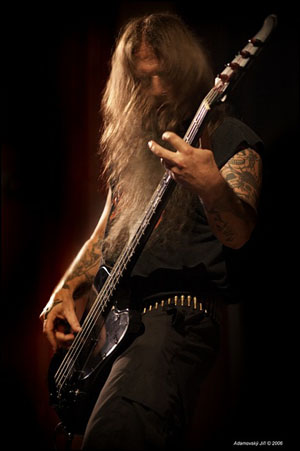
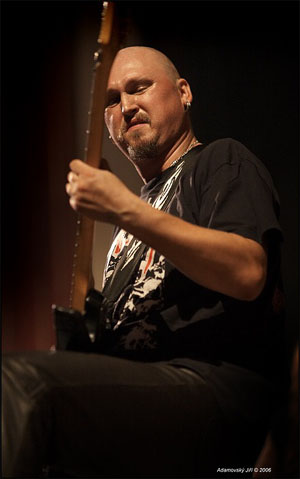
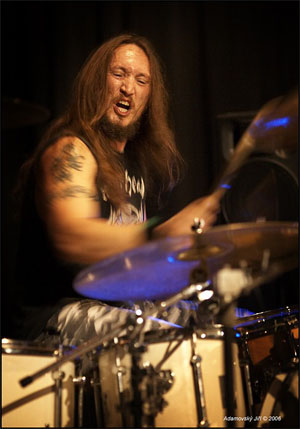
 Contacts: Alex Perialas, Pyramid Sound Andy Adelewitz, PR consultant
Contacts: Alex Perialas, Pyramid Sound Andy Adelewitz, PR consultant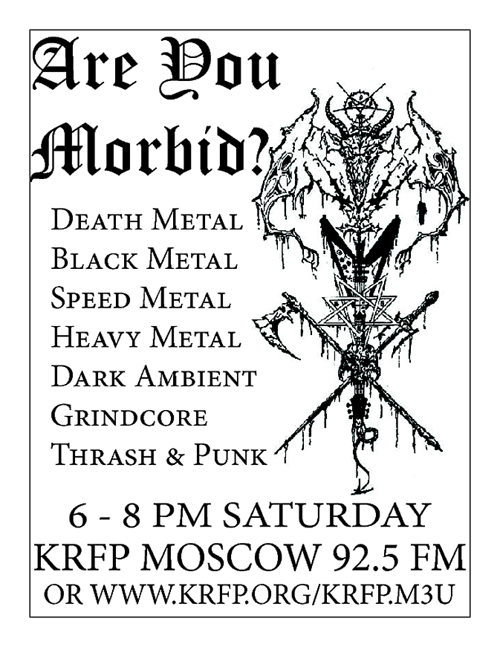 From 1995 to about 1999, the old underground tried to live on in a new modern form. Then it collapsed, and what took over was an indie/alt-rock hybrid of metal that lost the raw aggressive spirit of metal and replaced it with self-pity. Starting in 2006 or so, the revival of the underground began. A new radio show is helping blast that door wide open with a solid diet of underground death metal, black metal, grindcore, speed metal, thrash (crossover), and hardcore mixed in with dark ambient and possibly classical music. Meet Devolved, the voice and choice of music behind the show.
From 1995 to about 1999, the old underground tried to live on in a new modern form. Then it collapsed, and what took over was an indie/alt-rock hybrid of metal that lost the raw aggressive spirit of metal and replaced it with self-pity. Starting in 2006 or so, the revival of the underground began. A new radio show is helping blast that door wide open with a solid diet of underground death metal, black metal, grindcore, speed metal, thrash (crossover), and hardcore mixed in with dark ambient and possibly classical music. Meet Devolved, the voice and choice of music behind the show.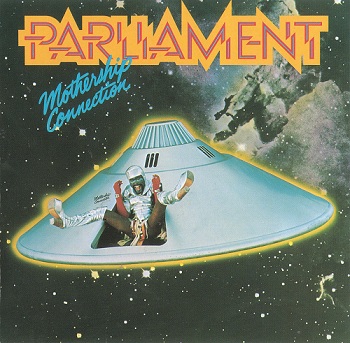
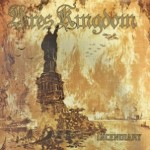 There is a certain door that any contemporary thrash band seeking quality must go through, a certain threshold that requires imagination and the indispensable talents of assimilation to really cross; in metal today, we see countless fragile trends that depend upon a rigid nostalgia and a lifeless worship of what has already happened, fully ignorant of the fact that what has true staying power is never something that was an idle imitation of something that was actually born of genius. In contrast to these bands, specifically the ones which belong to the so-called ‘retro-thrash’ trend, Ares Kingdom is of the opposite mindset; Ares Kingdom does not want to merely copy its primary influences, but to implement and authentically incorporate these influences into a relatively bold and forward-looking composition. The basic idea of Incendiary is quite simple: destroy the phoenix so that she may be reborn, an idea which is not so far from the opening narration of the Destroyer 666 track, Rise of the Predator. The execution, on the other hand, is what brings the band closer to actually demonstrating this vision than any other insignificant band that elects to portray death and apocalypse for aesthetic reasons alone; from the dismal album artwork to the indifference in Alex’s vocals, from the sad, painful melodies to the caustic and fiery riffs and solos that Chuck Keller (
There is a certain door that any contemporary thrash band seeking quality must go through, a certain threshold that requires imagination and the indispensable talents of assimilation to really cross; in metal today, we see countless fragile trends that depend upon a rigid nostalgia and a lifeless worship of what has already happened, fully ignorant of the fact that what has true staying power is never something that was an idle imitation of something that was actually born of genius. In contrast to these bands, specifically the ones which belong to the so-called ‘retro-thrash’ trend, Ares Kingdom is of the opposite mindset; Ares Kingdom does not want to merely copy its primary influences, but to implement and authentically incorporate these influences into a relatively bold and forward-looking composition. The basic idea of Incendiary is quite simple: destroy the phoenix so that she may be reborn, an idea which is not so far from the opening narration of the Destroyer 666 track, Rise of the Predator. The execution, on the other hand, is what brings the band closer to actually demonstrating this vision than any other insignificant band that elects to portray death and apocalypse for aesthetic reasons alone; from the dismal album artwork to the indifference in Alex’s vocals, from the sad, painful melodies to the caustic and fiery riffs and solos that Chuck Keller (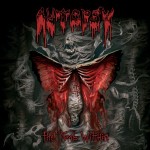 Of the artists who remain from times past, under whose names were unleashed the most disturbing and poignant sounds that defined Death Metal,
Of the artists who remain from times past, under whose names were unleashed the most disturbing and poignant sounds that defined Death Metal, 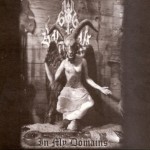 Another excellent tonal poem by this Mexican symphonic horde sees a sense of orchestration and riff balance that has all the consistency of ‘
Another excellent tonal poem by this Mexican symphonic horde sees a sense of orchestration and riff balance that has all the consistency of ‘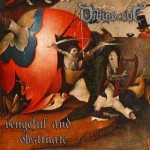
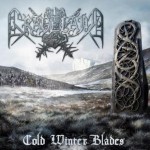 The unstoppable Rob Darken took again some time from swordfights and armour forging to take a look at the barbaric-modernist thematic system devised by composers such as Richard Wagner and Basil Poledouris, with a metallic energetic pulse rarely witnessed since Following the Voice of Blood; the last of the fast Graveland albums. The lack of Capricornus hardly matters because the authentic or perfectly synthesized drumkit recalls the same Celtic tribal warmarches and the raw, unsymmetric heartbeat of a primal man hunted by wolves, perfectly countered by the dark druid’s usual cold and hardened vocal delivery. A deeply neo-classical realization how to build heaviness through doomy speeds and chordal supplements still elevates the Polish seeker-initiator into a force far beyond today’s puny black and heathen metal “royalty”, looming beyond as a frightening presence of unrealized wisdom; nothing less than the Manowar of black metal, with no hint of irony or self-loathing. There exist two directions of expansion since the ethereal melodic chime of alfar nature in “From the Beginning of Time” is Summoning-esque (“
The unstoppable Rob Darken took again some time from swordfights and armour forging to take a look at the barbaric-modernist thematic system devised by composers such as Richard Wagner and Basil Poledouris, with a metallic energetic pulse rarely witnessed since Following the Voice of Blood; the last of the fast Graveland albums. The lack of Capricornus hardly matters because the authentic or perfectly synthesized drumkit recalls the same Celtic tribal warmarches and the raw, unsymmetric heartbeat of a primal man hunted by wolves, perfectly countered by the dark druid’s usual cold and hardened vocal delivery. A deeply neo-classical realization how to build heaviness through doomy speeds and chordal supplements still elevates the Polish seeker-initiator into a force far beyond today’s puny black and heathen metal “royalty”, looming beyond as a frightening presence of unrealized wisdom; nothing less than the Manowar of black metal, with no hint of irony or self-loathing. There exist two directions of expansion since the ethereal melodic chime of alfar nature in “From the Beginning of Time” is Summoning-esque (“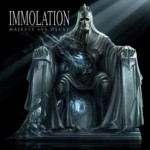
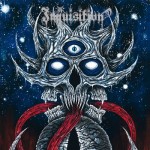 Recent history has borne witness to developments in Black Metal that sets the music more at war against itself than with it’s traditional enemies and time has accumulated vast quantities of debris resulting from this internal crisis of identity and credibility. The shape of all the rubble is appropriately rocky, resembling the multitude of “fairy land” daydreams based on genres of alternative popular music incorporated to gain the approval of outsiders who possess no more understanding of the wolfish, warlike and mystic poetry of Black Metal’s spiritual essence, but want to claim this ‘niche market’ as their own. Even the cloak of demonic symbology, long-since regarded as a joke to even the casual listener – little more than a generic garb for posturing and associating with the genre’s ancestors – has been accordingly stripped of all occultic luminance, which shined too fiercely over the eyes of the humanist infiltrator, such that the tears of depressive-suicidal ideologies would instantly evaporate. None of these signs of the times, however, have influenced the veteran duo of Dagon and Incubus, who, in an ultimate statement of Satanic zealotry and inhuman purity, tunnel back to the hypnotic primitivism of Black Metal’s first waves, re-formulating and refining the style of early Bathory to produce an album that reveals the inherent mystical wisdom which inspires Black Metal’s sinister imagery, with no recourse to obvious cliches nor over-intellectualisations in order to clutch at some idea of artistic credibility and potency. Based on the technique of Immortal’s ‘
Recent history has borne witness to developments in Black Metal that sets the music more at war against itself than with it’s traditional enemies and time has accumulated vast quantities of debris resulting from this internal crisis of identity and credibility. The shape of all the rubble is appropriately rocky, resembling the multitude of “fairy land” daydreams based on genres of alternative popular music incorporated to gain the approval of outsiders who possess no more understanding of the wolfish, warlike and mystic poetry of Black Metal’s spiritual essence, but want to claim this ‘niche market’ as their own. Even the cloak of demonic symbology, long-since regarded as a joke to even the casual listener – little more than a generic garb for posturing and associating with the genre’s ancestors – has been accordingly stripped of all occultic luminance, which shined too fiercely over the eyes of the humanist infiltrator, such that the tears of depressive-suicidal ideologies would instantly evaporate. None of these signs of the times, however, have influenced the veteran duo of Dagon and Incubus, who, in an ultimate statement of Satanic zealotry and inhuman purity, tunnel back to the hypnotic primitivism of Black Metal’s first waves, re-formulating and refining the style of early Bathory to produce an album that reveals the inherent mystical wisdom which inspires Black Metal’s sinister imagery, with no recourse to obvious cliches nor over-intellectualisations in order to clutch at some idea of artistic credibility and potency. Based on the technique of Immortal’s ‘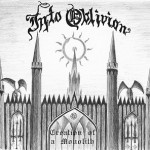
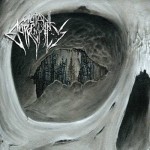 The New York City borough of Brooklyn might be better known to the universal consciousness as “The Hipster Capital of the World”, “A Fantastic Place to Collect STDs”, or “Where Culture Goes to be Sodomized”, amongst other colorful and imaginative epithets. Naturally, any self-touting Metal bands originating from this region ought to be approached with utmost scrutiny, as these are all almost invariably revealed to be alternative rock acts hiding beneath a masquerade of long hair and Dionysian discord. Breaking decisively away from this brand of perfidious whoredom are nouveau death metallers Mutant Supremacy, who occupy a peculiar nexus in between
The New York City borough of Brooklyn might be better known to the universal consciousness as “The Hipster Capital of the World”, “A Fantastic Place to Collect STDs”, or “Where Culture Goes to be Sodomized”, amongst other colorful and imaginative epithets. Naturally, any self-touting Metal bands originating from this region ought to be approached with utmost scrutiny, as these are all almost invariably revealed to be alternative rock acts hiding beneath a masquerade of long hair and Dionysian discord. Breaking decisively away from this brand of perfidious whoredom are nouveau death metallers Mutant Supremacy, who occupy a peculiar nexus in between 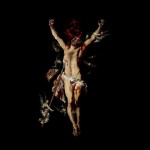 True to form, Profanatica release a focused, energetic and iconoclastic opus that shatters and mocks any infantile and moralistic conception of reality. Both compositionally and aesthetically powerful, the production on Disgusting Blasphemies against God is both clear and full, lending itself nicely to an analysis of its subtleties and providing the clarity necessary to gain a chuckle at the expense of nearby spectators privy to the album’s intrusive vitriol. Ledney’s vocals are hilariously clear yet retain a threateningly violent quality that is becoming of this style of Black Metal. As Ledney vomits forth his blasphemic ritual, listeners are treated to a notably ominous musical atmosphere that is uncomfortably somber, deranged and challenging. Utilizing single note tremolo picking, reminiscent of a cross between a more consonant Havohej and the effective and simple melodies of VON, Ledney in is his genius, develops motifs, that while perhaps more obvious and accessible, remain potent and successfully create an intriguing state of anxiety. These motifs both seamlessly emerge from, and return to sinister Incantation style riffs which work together to develop a unity and structural coherence that while primal and simple is undoubtedly effective. The interplay between these musical variable creates an overall experience that portends the celebration of the powerful, living and animated chthonic mysteries and perhaps more pressingly the apotheosis of their necessary destructive capacities.
True to form, Profanatica release a focused, energetic and iconoclastic opus that shatters and mocks any infantile and moralistic conception of reality. Both compositionally and aesthetically powerful, the production on Disgusting Blasphemies against God is both clear and full, lending itself nicely to an analysis of its subtleties and providing the clarity necessary to gain a chuckle at the expense of nearby spectators privy to the album’s intrusive vitriol. Ledney’s vocals are hilariously clear yet retain a threateningly violent quality that is becoming of this style of Black Metal. As Ledney vomits forth his blasphemic ritual, listeners are treated to a notably ominous musical atmosphere that is uncomfortably somber, deranged and challenging. Utilizing single note tremolo picking, reminiscent of a cross between a more consonant Havohej and the effective and simple melodies of VON, Ledney in is his genius, develops motifs, that while perhaps more obvious and accessible, remain potent and successfully create an intriguing state of anxiety. These motifs both seamlessly emerge from, and return to sinister Incantation style riffs which work together to develop a unity and structural coherence that while primal and simple is undoubtedly effective. The interplay between these musical variable creates an overall experience that portends the celebration of the powerful, living and animated chthonic mysteries and perhaps more pressingly the apotheosis of their necessary destructive capacities. 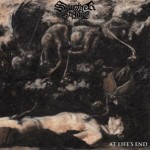 Toronto’s death dealers unearth the forgotten formulas of 80s-90s extreme metal in their second offering, a follow-up to the debut cassette “A Litany of Vileness”. This punk-driven death metal statement delivered by veterans of Canadian scene (former members of The Endless Blockade and Rammer) shows no mercy: it is short, volatile and dirty. Yet, at the same time the material is well weighed and balanced, blessed with the genuine feel of old-school art. The production helps conveying old metal nostalgia whereas Spartan songwriting confronts useless acrobatic tendencies of the modern scene. The band’s uncompromising music is perfectly collaborated with artwork by Moscow artist
Toronto’s death dealers unearth the forgotten formulas of 80s-90s extreme metal in their second offering, a follow-up to the debut cassette “A Litany of Vileness”. This punk-driven death metal statement delivered by veterans of Canadian scene (former members of The Endless Blockade and Rammer) shows no mercy: it is short, volatile and dirty. Yet, at the same time the material is well weighed and balanced, blessed with the genuine feel of old-school art. The production helps conveying old metal nostalgia whereas Spartan songwriting confronts useless acrobatic tendencies of the modern scene. The band’s uncompromising music is perfectly collaborated with artwork by Moscow artist 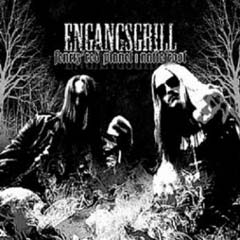 We’re going to talk about the first band here, Fenriz’ Red Planet, because Nattefrost is forgettable 1970s punk rock dressed up as early 1980s black metal. This band is a hybrid between doom metal, 1970s heavy guitar jam, and what they call stoner doom now but was recognizable in St. Vitus, Pentagram and Sleep for many years. The production approach and song style is closest to 1970s heavy guitar rock, like Cream or even Led Zeppelin, in that songs are verse/chorus works with a big fat diversion stuck in the middle that may run through a couple of riffs but comes back into key and rhythm so the cycle can spin again. But over half of the riffs are straight out of old school 1980s doom metal, and that would be St. Vitus and Pentagram but also late-blooming NWOBHM with a doom edge like Witchfinder General and Budgie. It’s not exciting; if anything, it sounds like a demo where the band hasn’t yet finalized direction and aesthetic. However, it is good; these songs have character and a spirit to them which you cannot get anywhere else. You can hear a few lifts from Fenriz’ folk/metal project Storm and one or two similar themes to Darkthrone, but this CD doesn’t need to namedrop to stand on its own. They named it “Engangsgrill,” which apparently is a type of disposable barbecue, which fits exactly the kind of sloppy rock/metal hybrid you have here: pickup trucks headed to the country with a keg, a bong and some friends, followed by a weekend of the best neighborhood bands jamming, society gets forgotten until on Monday morning you drive back with a mouth full of ash and the kind of diluted hangover that comes from cheap beer in constant consumption.
We’re going to talk about the first band here, Fenriz’ Red Planet, because Nattefrost is forgettable 1970s punk rock dressed up as early 1980s black metal. This band is a hybrid between doom metal, 1970s heavy guitar jam, and what they call stoner doom now but was recognizable in St. Vitus, Pentagram and Sleep for many years. The production approach and song style is closest to 1970s heavy guitar rock, like Cream or even Led Zeppelin, in that songs are verse/chorus works with a big fat diversion stuck in the middle that may run through a couple of riffs but comes back into key and rhythm so the cycle can spin again. But over half of the riffs are straight out of old school 1980s doom metal, and that would be St. Vitus and Pentagram but also late-blooming NWOBHM with a doom edge like Witchfinder General and Budgie. It’s not exciting; if anything, it sounds like a demo where the band hasn’t yet finalized direction and aesthetic. However, it is good; these songs have character and a spirit to them which you cannot get anywhere else. You can hear a few lifts from Fenriz’ folk/metal project Storm and one or two similar themes to Darkthrone, but this CD doesn’t need to namedrop to stand on its own. They named it “Engangsgrill,” which apparently is a type of disposable barbecue, which fits exactly the kind of sloppy rock/metal hybrid you have here: pickup trucks headed to the country with a keg, a bong and some friends, followed by a weekend of the best neighborhood bands jamming, society gets forgotten until on Monday morning you drive back with a mouth full of ash and the kind of diluted hangover that comes from cheap beer in constant consumption.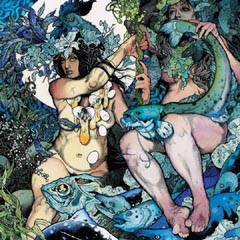 Oh neat, an emo/stoner metal hybrid with lots of indie and punk rock touches. If you can imagine Neurosis and Jawbreaker making sweet love with newer Sleep, and throwing in tons of stuff from the heavy metal and indie rock canons, you’ll have a good image of what this cheeseball release has to offer. From the way the labels and the big industry reviewers — who have about five minutes to hear each CD, and put them on in the background while socializing for two weeks, then forget about them — went on about this CD, you’d think it was the second coming of innovation itself. Instead, it’s stale and completely loses what’s good about metal and punk, converging on a mean that’s closer to your run-of-the-mill hipster band. This is awful.
Oh neat, an emo/stoner metal hybrid with lots of indie and punk rock touches. If you can imagine Neurosis and Jawbreaker making sweet love with newer Sleep, and throwing in tons of stuff from the heavy metal and indie rock canons, you’ll have a good image of what this cheeseball release has to offer. From the way the labels and the big industry reviewers — who have about five minutes to hear each CD, and put them on in the background while socializing for two weeks, then forget about them — went on about this CD, you’d think it was the second coming of innovation itself. Instead, it’s stale and completely loses what’s good about metal and punk, converging on a mean that’s closer to your run-of-the-mill hipster band. This is awful.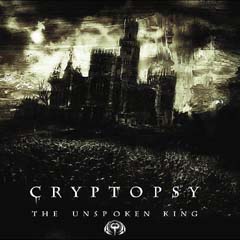 This is what’s left of the band that made None So Vile? The neatly structured, compact death metal has been replaced with blasting metalcore. Metalcore, as you may know, is kind of a garbage plate for underground metal and punk. Based around the interpretation of technical metal into punk structures that Human Remains showed us, metalcore loves randomness in circular song structures, so you get ten minimally-related riffs linked by a breakdown and a few slow chants, and then the whole thing repeats, and then the song ends. It’s music for a fragmented mind and as a result, has the IQ of a headless chicken watching daytime TV. Cryptopsy utterly fails to make coherent music out of this style as their countrymen Neuraxis eventually did, and instead defecate this collection of random riffs based around an egodramatic vocal track. It’s total garbage for morons.
This is what’s left of the band that made None So Vile? The neatly structured, compact death metal has been replaced with blasting metalcore. Metalcore, as you may know, is kind of a garbage plate for underground metal and punk. Based around the interpretation of technical metal into punk structures that Human Remains showed us, metalcore loves randomness in circular song structures, so you get ten minimally-related riffs linked by a breakdown and a few slow chants, and then the whole thing repeats, and then the song ends. It’s music for a fragmented mind and as a result, has the IQ of a headless chicken watching daytime TV. Cryptopsy utterly fails to make coherent music out of this style as their countrymen Neuraxis eventually did, and instead defecate this collection of random riffs based around an egodramatic vocal track. It’s total garbage for morons.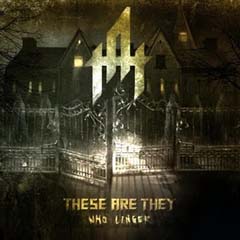 Imagine Iron Maiden doing a simplified version of 1990s Demigod or Amorphis. This CD is unique in that it successfully applies both (a) the old school death metal style and (b) a heavy metal, harmonized-guitar, bouncy riff style — and does it by coming up with a melodic phrase and answer, and using these to make layers of verse and chorus. Play riff; play notes of riff in variation of rhythm; harmonize guitars and repeat, then cycle. The choruses do the same. Nothing sounds out of place, and the deep guttural voice guides it along, but it seems entirely out of place when the heavy metal riffs and trills come into play. In addition, the riff salad of death metal isn’t here; like rock or indie, this rides one pattern for verse and one for chorus, and much variation is not to be found, which probably places this out of the range of old school death metal fans. Still, these are quality riffs and excellent use of basic harmony, which makes this easy listening and because it is not random, a great improvement on the metalcore-heavy stuff we hear daily. For albums like later Bolt Thrower, which tried to make a heavy metal/death metal hybrid, this is probably the best so far.
Imagine Iron Maiden doing a simplified version of 1990s Demigod or Amorphis. This CD is unique in that it successfully applies both (a) the old school death metal style and (b) a heavy metal, harmonized-guitar, bouncy riff style — and does it by coming up with a melodic phrase and answer, and using these to make layers of verse and chorus. Play riff; play notes of riff in variation of rhythm; harmonize guitars and repeat, then cycle. The choruses do the same. Nothing sounds out of place, and the deep guttural voice guides it along, but it seems entirely out of place when the heavy metal riffs and trills come into play. In addition, the riff salad of death metal isn’t here; like rock or indie, this rides one pattern for verse and one for chorus, and much variation is not to be found, which probably places this out of the range of old school death metal fans. Still, these are quality riffs and excellent use of basic harmony, which makes this easy listening and because it is not random, a great improvement on the metalcore-heavy stuff we hear daily. For albums like later Bolt Thrower, which tried to make a heavy metal/death metal hybrid, this is probably the best so far.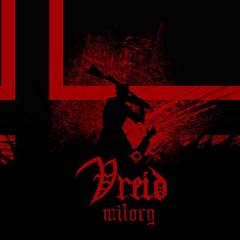 Black metal was about writing unique melodies and building song structures to fit them. Vreid is about mimicking the past with more intensity in each riff, but relying on predictable melodic strips and linear song structures in circular repetition, resulting in songs that are binary like nu-metal: a softer part, then a harder part, then a response to that which softens the hardness, then a restatement at full blast, fade out and win. Most of these riffs come from the 1970s and 1980s generations of metal and get a “black metal” treatment, so end up sounding like rock music in its Sunday black metal evil clothes. The music is driving by a chanting vocal which rides the beat like the shouts of the drummer commanding the slaves to row. Every now and then they launch into an extended melody like a pentatonic version of early ancient, and they have the raw rhythmic power of an early Marduk or Zyklon, but it doesn’t add up to more than most rock music, and considerably less than the formative works of Nordic black metal.
Black metal was about writing unique melodies and building song structures to fit them. Vreid is about mimicking the past with more intensity in each riff, but relying on predictable melodic strips and linear song structures in circular repetition, resulting in songs that are binary like nu-metal: a softer part, then a harder part, then a response to that which softens the hardness, then a restatement at full blast, fade out and win. Most of these riffs come from the 1970s and 1980s generations of metal and get a “black metal” treatment, so end up sounding like rock music in its Sunday black metal evil clothes. The music is driving by a chanting vocal which rides the beat like the shouts of the drummer commanding the slaves to row. Every now and then they launch into an extended melody like a pentatonic version of early ancient, and they have the raw rhythmic power of an early Marduk or Zyklon, but it doesn’t add up to more than most rock music, and considerably less than the formative works of Nordic black metal.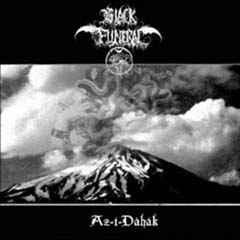 Throbbing notes rhythm a rhythm that then reverses, examines a portion of itself in detail, and then picks up in a new direction which dovetails with the old; the throb remains, like symbols etched in the air with a torch caught on the slower memory of film. In this way, Black Funeral achieves an odd ambience similar to that of Impetigo, where a higher note is strummed repetitively at an offset rhythm where most bands would hammer a lower note on the beat, but by the nature of the larger melodic structure of the riff, this throb does not bounce jauntily like a rock rhythm; it hangs, like a reminder of mortality. Vocals are chant-ish black metal rasps and the mechanistic pedaling of the drum machine fits this sound like a glove, getting further inhuman as it distances us from musical expectation and clean aesthetics. Like the humming beeps of an alien machine exploring the night, this album rediscovers humanity by removing it from the picture and showing us the empty space in which we must construct as inevitable death closes in. While most experts agree “Vampyr” is the height of this band — and who am I to disagree? — this perhaps less proficient album is more haunting and bizarre, yet fits it into a pattern similar to our reminiscences of isolated nights when the future angled away from us like the shadow of an unknown doorway.
Throbbing notes rhythm a rhythm that then reverses, examines a portion of itself in detail, and then picks up in a new direction which dovetails with the old; the throb remains, like symbols etched in the air with a torch caught on the slower memory of film. In this way, Black Funeral achieves an odd ambience similar to that of Impetigo, where a higher note is strummed repetitively at an offset rhythm where most bands would hammer a lower note on the beat, but by the nature of the larger melodic structure of the riff, this throb does not bounce jauntily like a rock rhythm; it hangs, like a reminder of mortality. Vocals are chant-ish black metal rasps and the mechanistic pedaling of the drum machine fits this sound like a glove, getting further inhuman as it distances us from musical expectation and clean aesthetics. Like the humming beeps of an alien machine exploring the night, this album rediscovers humanity by removing it from the picture and showing us the empty space in which we must construct as inevitable death closes in. While most experts agree “Vampyr” is the height of this band — and who am I to disagree? — this perhaps less proficient album is more haunting and bizarre, yet fits it into a pattern similar to our reminiscences of isolated nights when the future angled away from us like the shadow of an unknown doorway.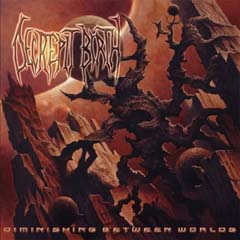 If the recombinant album name and band name didn’t clue you in, here’s the skinny: this band is totally postmodern, meaning that they fit together all sorts of random influences and then link them together with the basics of rhythm and harmony. As a result, it’s like a fast ride at Disneyland: constant changing stimulus of radical difference so much that after a while you lose any idea of where you are, and end up thinking you’ve come very far, when at the very end as the buggy slows you realize you’ve been circling around the same relatively small space. Unlike most bands of this type, which I’m going to call crypto-metalcore because it’s (a) without death metal’s style of organization, preferring instead the hardcore method of having riffs have as little in common as possible and no narrative (b) of mixed riff styles and (c) depends on rhythmic buildup/breakdown for tension because you’re not going to get it in contrast between riffs, Decrepit Birth is good — it’s like an Iron Maiden album hidden in Deeds of Flesh with Blotted Science and Negativa offering critique. However, I can’t listen to this carnival music; it breaks down concentration and replaces it with elaborate versions of territory trod long ago.
If the recombinant album name and band name didn’t clue you in, here’s the skinny: this band is totally postmodern, meaning that they fit together all sorts of random influences and then link them together with the basics of rhythm and harmony. As a result, it’s like a fast ride at Disneyland: constant changing stimulus of radical difference so much that after a while you lose any idea of where you are, and end up thinking you’ve come very far, when at the very end as the buggy slows you realize you’ve been circling around the same relatively small space. Unlike most bands of this type, which I’m going to call crypto-metalcore because it’s (a) without death metal’s style of organization, preferring instead the hardcore method of having riffs have as little in common as possible and no narrative (b) of mixed riff styles and (c) depends on rhythmic buildup/breakdown for tension because you’re not going to get it in contrast between riffs, Decrepit Birth is good — it’s like an Iron Maiden album hidden in Deeds of Flesh with Blotted Science and Negativa offering critique. However, I can’t listen to this carnival music; it breaks down concentration and replaces it with elaborate versions of territory trod long ago.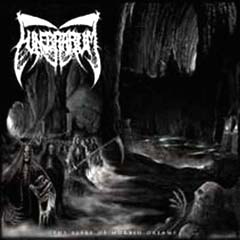 What happened here? Eight years ago — before old-school “revival” was even a blip on the radar — this band had the apparent potential to give proper life to archaic death metal form. Their first album/demo was a brooding, infectious and grimly cohesive piece of work, enough so to make this sound almost brazenly cheap by comparison. Toss in every imaginable death metal riff style coined between 1989 and 1993, lay them out on a rhythmic smorgasbord and put them through enough mood changes to make a pregnant teenager blush and you’ve come damn close to this; add enough embarassing Bloodbath-sounding material (listen to the opener) to something otherwise “authentic” and you’ll never want to hear “old school” again. – kontinual
What happened here? Eight years ago — before old-school “revival” was even a blip on the radar — this band had the apparent potential to give proper life to archaic death metal form. Their first album/demo was a brooding, infectious and grimly cohesive piece of work, enough so to make this sound almost brazenly cheap by comparison. Toss in every imaginable death metal riff style coined between 1989 and 1993, lay them out on a rhythmic smorgasbord and put them through enough mood changes to make a pregnant teenager blush and you’ve come damn close to this; add enough embarassing Bloodbath-sounding material (listen to the opener) to something otherwise “authentic” and you’ll never want to hear “old school” again. – kontinual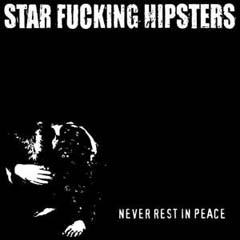 There are some of us who believe that rock and roll music, instead of being a thing deliberately created, is an aggregate of what was left over when we tested everything else against a captive audience. Star Fucking Hipsters prove this by carefully absorbing everything they can into the great sponge of melancholy indie pop. These songs usually start off with fast punk or speed metal (Slayer) riffs, and then pass through a few exciting transitions borrowed from anything industrial, black and reggage or between, but then we get to the core: darkish, self-pitying, somewhat helpless indie pop. True, it’s in pop punk format like The Descendents meets Blink 182 with Jane’s Addiction advising on behalf of the emo CIA, but basically, it’s pop. And when we get to that point we see this album is like a confused and lonely person in the city, covering themselves with newspapers or whatever fashions they can yank out of the wind, hoping no one will ever get a glimpse inside. If that’s its goal, this is supreme art, but more likely it is the emoting of such people hoping we’ll justify their existence for them. As pop, it’s not bad, a little toward the “poignant” side of minor key melodies sliding into major key to give you a sense of hope. But it’s really the same old thing, or the latest incarnation of it in whatever styles have stuck over the past twelve years, and so I can’t imagine why you’d listen to this instead of any of the 100,000 other albums this “good” in the rock style.
There are some of us who believe that rock and roll music, instead of being a thing deliberately created, is an aggregate of what was left over when we tested everything else against a captive audience. Star Fucking Hipsters prove this by carefully absorbing everything they can into the great sponge of melancholy indie pop. These songs usually start off with fast punk or speed metal (Slayer) riffs, and then pass through a few exciting transitions borrowed from anything industrial, black and reggage or between, but then we get to the core: darkish, self-pitying, somewhat helpless indie pop. True, it’s in pop punk format like The Descendents meets Blink 182 with Jane’s Addiction advising on behalf of the emo CIA, but basically, it’s pop. And when we get to that point we see this album is like a confused and lonely person in the city, covering themselves with newspapers or whatever fashions they can yank out of the wind, hoping no one will ever get a glimpse inside. If that’s its goal, this is supreme art, but more likely it is the emoting of such people hoping we’ll justify their existence for them. As pop, it’s not bad, a little toward the “poignant” side of minor key melodies sliding into major key to give you a sense of hope. But it’s really the same old thing, or the latest incarnation of it in whatever styles have stuck over the past twelve years, and so I can’t imagine why you’d listen to this instead of any of the 100,000 other albums this “good” in the rock style.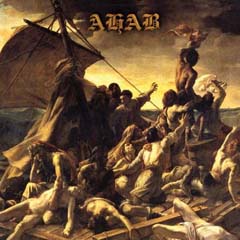 Funeral doom of a style similar to Skepticism if merged with Esoteric, with a tiny bit of Paradise Lost or Sleep in the wings, Ahab is a studied take on the slow and depressive atmospheric music that many people seem to enjoy. Stylistically, it is probably the most advanced of its kind; musically, it is perfectly competent; artistically, it is not particularly compelling. Its melodies have less of a sense of mixed emotions than do those of Skepticism, and its songs develop in predictable cycles within cycles, leaving us with atmosphere by default once all else has been blocked out. Like American rock bands, Ahab also has to throw in that sense of “contrast” where any dominant idea gets a contrarian voice thrown up against it, where bands like Skepticism bear down with enhancement and variation inside their major ideas. Few want to be the voice to stand up and say this, but most doom metal is boring, and not just because it’s slow. Ahab, while better than most, falls under this umbrella.
Funeral doom of a style similar to Skepticism if merged with Esoteric, with a tiny bit of Paradise Lost or Sleep in the wings, Ahab is a studied take on the slow and depressive atmospheric music that many people seem to enjoy. Stylistically, it is probably the most advanced of its kind; musically, it is perfectly competent; artistically, it is not particularly compelling. Its melodies have less of a sense of mixed emotions than do those of Skepticism, and its songs develop in predictable cycles within cycles, leaving us with atmosphere by default once all else has been blocked out. Like American rock bands, Ahab also has to throw in that sense of “contrast” where any dominant idea gets a contrarian voice thrown up against it, where bands like Skepticism bear down with enhancement and variation inside their major ideas. Few want to be the voice to stand up and say this, but most doom metal is boring, and not just because it’s slow. Ahab, while better than most, falls under this umbrella.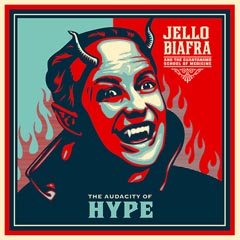 Purists will kill me for this, but this is Biafra’s best work — it’s musical. Where the Dead Kennedys sounded disorganized and messy without really building on that as an aesthetic, he’s slowed down to a pop-punk combo that uses hardcore riffs (Discharge, Exploited) to balance its melodic lead picking (Circle Jerks, The Plugz). That, plus Southern Fried guitar solos and lead guitar noise, forms the underpinning for a more interesting Biafra performance than has ever been heard before. On this CD, Biafra develops his vocal lines both melodically and in timbre, giving the performance of his life with verve and energy. You’ve heard these riff types before, and many of the note progressions are “pop culture” stalwarts that show up in movie soundtracks and commercials, but here Biafra and his band develop each into a song that’s half-rock and half-hardcore, creating a foundation that will introduce a new generation to the sounds of hardcore punk.
Purists will kill me for this, but this is Biafra’s best work — it’s musical. Where the Dead Kennedys sounded disorganized and messy without really building on that as an aesthetic, he’s slowed down to a pop-punk combo that uses hardcore riffs (Discharge, Exploited) to balance its melodic lead picking (Circle Jerks, The Plugz). That, plus Southern Fried guitar solos and lead guitar noise, forms the underpinning for a more interesting Biafra performance than has ever been heard before. On this CD, Biafra develops his vocal lines both melodically and in timbre, giving the performance of his life with verve and energy. You’ve heard these riff types before, and many of the note progressions are “pop culture” stalwarts that show up in movie soundtracks and commercials, but here Biafra and his band develop each into a song that’s half-rock and half-hardcore, creating a foundation that will introduce a new generation to the sounds of hardcore punk.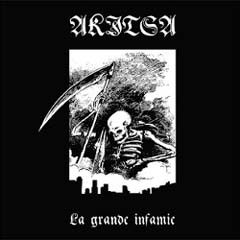 Most of us love the idea of black metal: a few totally socially alienated people, armed only with the truth, pick up guitars one weekend and make a simple mind-virus that helps slay all of the vastly powerful illusions that make our modern world miserable. The problem is that this is far from the truth: most of the people who have made great simple black metal were expert players or at least savants who self-schooled themselves in a unique and powerful style, and their work is very deliberate and designed to make us enjoy life as much as convey some idea. But as in all things, each generation picks up where the previous generation appeared to leave off, so the source of the idea is always lost. Akitsa sounds like a cross between The Exploited and early Dark Funeral, with simple melodic riffs offset against sawing basic power chording; the melodic riffs are too candy-sweet and the power chord riffs are too much of a style we can get anywhere. “Silence” appears to be heavily influenced by “Thy Winter Kingdom” from the first Behemoth CD. The rest of the CD is alternating Burzum influences with later model droning melody. It is both not bad and not really compelling enough to want to hear again.
Most of us love the idea of black metal: a few totally socially alienated people, armed only with the truth, pick up guitars one weekend and make a simple mind-virus that helps slay all of the vastly powerful illusions that make our modern world miserable. The problem is that this is far from the truth: most of the people who have made great simple black metal were expert players or at least savants who self-schooled themselves in a unique and powerful style, and their work is very deliberate and designed to make us enjoy life as much as convey some idea. But as in all things, each generation picks up where the previous generation appeared to leave off, so the source of the idea is always lost. Akitsa sounds like a cross between The Exploited and early Dark Funeral, with simple melodic riffs offset against sawing basic power chording; the melodic riffs are too candy-sweet and the power chord riffs are too much of a style we can get anywhere. “Silence” appears to be heavily influenced by “Thy Winter Kingdom” from the first Behemoth CD. The rest of the CD is alternating Burzum influences with later model droning melody. It is both not bad and not really compelling enough to want to hear again.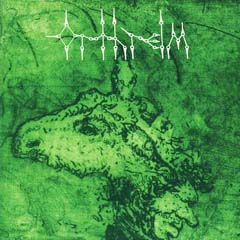 I wish this album were a joke, but like most modern and postmodern art, it’s an attempt to “demonstrate” an “idea,” and that idea has no correlation to the reality of an artist both entertaining and informing his listeners. Instead, you get a lot of fast chromatic playing over serial drumming with occasional breaks into jazz-style breakdowns that are either sloppy or misinformed about music theory. The result is a dissonant atmosphere after the band lulls you into contentment with repetition. Over time, the basic pattern increases in a period-doubling format, creating a linear expansion on a basic idea that resembles holy books that write about the universe expanding from a breath, except here the expansion leads to nothing but a reflection of itself. When Burzum did this with Det Som Engang Var, it built a mood that gained resurgent power of time; here it is purely deconstructive and fragments the listener’s attention span by forcing it through a narrow slit of musical awareness. People will like this because it’s unique, and talk about how genius it is because no one else “dared to be different” to such a degree, but as a work of meaningful art and a listening experience, it is worthless.
I wish this album were a joke, but like most modern and postmodern art, it’s an attempt to “demonstrate” an “idea,” and that idea has no correlation to the reality of an artist both entertaining and informing his listeners. Instead, you get a lot of fast chromatic playing over serial drumming with occasional breaks into jazz-style breakdowns that are either sloppy or misinformed about music theory. The result is a dissonant atmosphere after the band lulls you into contentment with repetition. Over time, the basic pattern increases in a period-doubling format, creating a linear expansion on a basic idea that resembles holy books that write about the universe expanding from a breath, except here the expansion leads to nothing but a reflection of itself. When Burzum did this with Det Som Engang Var, it built a mood that gained resurgent power of time; here it is purely deconstructive and fragments the listener’s attention span by forcing it through a narrow slit of musical awareness. People will like this because it’s unique, and talk about how genius it is because no one else “dared to be different” to such a degree, but as a work of meaningful art and a listening experience, it is worthless.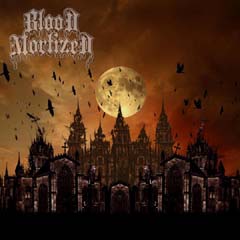 This band claims “active” status in the early nineties, with zero material to show for it. It may very well be true; current personnel have some of the more run-of-the-mill Stockholm bands to brag about in their ancestry. Excited yet? This falls somewhere between Amon Amarth and Dismember’s Massive Killing Capacity, smothered in the “soft” mimicry of the Sunlight sound that seems so common for these fence-sitting bands. The plod is painful and simple and the song development as bluntly screwball as the song titles, lending an air of crafted irony to the whole presentation lest somebody seriously stack it up against any of its predecessors. One wonders whence this stuff keeps coming — I’m wont to call this the “Swedish mid-life crisis” and leave it at that. – kontinual
This band claims “active” status in the early nineties, with zero material to show for it. It may very well be true; current personnel have some of the more run-of-the-mill Stockholm bands to brag about in their ancestry. Excited yet? This falls somewhere between Amon Amarth and Dismember’s Massive Killing Capacity, smothered in the “soft” mimicry of the Sunlight sound that seems so common for these fence-sitting bands. The plod is painful and simple and the song development as bluntly screwball as the song titles, lending an air of crafted irony to the whole presentation lest somebody seriously stack it up against any of its predecessors. One wonders whence this stuff keeps coming — I’m wont to call this the “Swedish mid-life crisis” and leave it at that. – kontinual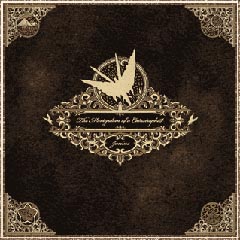 What is post-rock? For most, it’s slow atmospheric rock beats with emo, punk, indie and noise riffs slowed down to provide texture. On this CD, Junius blend in a modern taste of the ancient with a Dead Can Dance influence. The result is like a river, winding around obstacles to rejoin itself, but only suggesting a topography. This music is comforting and melancholic, but not really exciting. It is pretty, but will find it hard to escape a lukewarm rock underpinning that reigns in its tendencies to escape for the outer limits. A reasonable comparison might be if Danzig decided to do a space rock album: you can appreciate it aesthetically, but sense how the voice isn’t really there, and how as much as these guys want to be ancient, they’re stuck in a modern paradigm.
What is post-rock? For most, it’s slow atmospheric rock beats with emo, punk, indie and noise riffs slowed down to provide texture. On this CD, Junius blend in a modern taste of the ancient with a Dead Can Dance influence. The result is like a river, winding around obstacles to rejoin itself, but only suggesting a topography. This music is comforting and melancholic, but not really exciting. It is pretty, but will find it hard to escape a lukewarm rock underpinning that reigns in its tendencies to escape for the outer limits. A reasonable comparison might be if Danzig decided to do a space rock album: you can appreciate it aesthetically, but sense how the voice isn’t really there, and how as much as these guys want to be ancient, they’re stuck in a modern paradigm.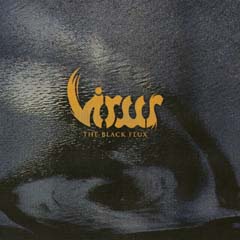 For the last time: if I wanted indie rock, I would have gone to a different part of the record store. Take your Sisters of Mercy gothic vocals, your bad indie rock open chord guitar riffs, and your basic song structures interrupted by dramatic outbursts, and put them there. I don’t want to fall into the old trap of saying “this isn’t metal,” because what I really want to say is that this is indie rock and should be integrated into that genre for the modicum of black metal stylings and ideas it still possesses. Sure, they’re going to call it a “post-rock” influence, but other than a little flexibility of rhythm, what’s going on here is the same stuff emo, indie and shoegaze bands were pumping out in the early 1990s.
For the last time: if I wanted indie rock, I would have gone to a different part of the record store. Take your Sisters of Mercy gothic vocals, your bad indie rock open chord guitar riffs, and your basic song structures interrupted by dramatic outbursts, and put them there. I don’t want to fall into the old trap of saying “this isn’t metal,” because what I really want to say is that this is indie rock and should be integrated into that genre for the modicum of black metal stylings and ideas it still possesses. Sure, they’re going to call it a “post-rock” influence, but other than a little flexibility of rhythm, what’s going on here is the same stuff emo, indie and shoegaze bands were pumping out in the early 1990s.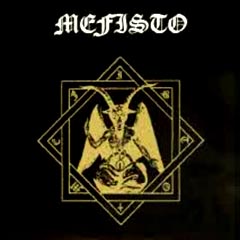 This CD resembles death metal in no way other than the vocals, which are the kind of reverbed whisper shout that made the first Sepultura EP so memorable. But the music… well, it’s stranded in the 1980s. Throw a lot of Metallica, Kreator, Slayer and Destruction in a blender — like every other band from that era — and you’ll get this mismash of riffs very similar to both the aforementioned bands and a huge heritage of heavy metal. To their credit, this band string them together well rhythmically but otherwise seem entirely random. Before someone convinces you this is a forgotten classic, ask them if classic means “good” or just that it was around in the early 1990s.
This CD resembles death metal in no way other than the vocals, which are the kind of reverbed whisper shout that made the first Sepultura EP so memorable. But the music… well, it’s stranded in the 1980s. Throw a lot of Metallica, Kreator, Slayer and Destruction in a blender — like every other band from that era — and you’ll get this mismash of riffs very similar to both the aforementioned bands and a huge heritage of heavy metal. To their credit, this band string them together well rhythmically but otherwise seem entirely random. Before someone convinces you this is a forgotten classic, ask them if classic means “good” or just that it was around in the early 1990s. We all want to love anything with the enigmatic Nocturno Culto on it. In fact, many of us were hoping he would pull off a Nemesis Divina where his skills converted an unexceptional band into a relative masterpiece. Not so on Sarke — his performance is phoned in, mainly because these songs are sparse, undeveloped, and entirely derivative of their influences in a 1989 way. In fact, the whole CD has the vibe of a collection of songs that have been kicked around since they got written in the 1980s, finally put onto vinyl years after the genre has passed them by. You’re familiar with these chord progressions and general rhythms, since many of them come out of punk rock and hard rock, and you’re probably not unacquainted — unless you’ve been under a rock labeled BLACK METAL GO HOME for the last two decades — with Culto’s interpretation of them. It’s all quite vanilla; nothing to really be appalled at here except how little you care about this flat regurgitation of the past.
We all want to love anything with the enigmatic Nocturno Culto on it. In fact, many of us were hoping he would pull off a Nemesis Divina where his skills converted an unexceptional band into a relative masterpiece. Not so on Sarke — his performance is phoned in, mainly because these songs are sparse, undeveloped, and entirely derivative of their influences in a 1989 way. In fact, the whole CD has the vibe of a collection of songs that have been kicked around since they got written in the 1980s, finally put onto vinyl years after the genre has passed them by. You’re familiar with these chord progressions and general rhythms, since many of them come out of punk rock and hard rock, and you’re probably not unacquainted — unless you’ve been under a rock labeled BLACK METAL GO HOME for the last two decades — with Culto’s interpretation of them. It’s all quite vanilla; nothing to really be appalled at here except how little you care about this flat regurgitation of the past.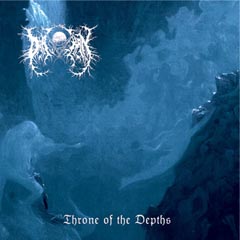 We live in a time of fools. Given no real truths to chew on, they raise themselves on lies, and make competing lies so they can be heard. Then they tell us what metal bands to listen to, and they cannot tell the difference between good music and derivative shit. They will, for example, convince themselves that Drautran is folk metal, when really it’s indie rock songs dressed up in black metal chord forms with a little extra violence. Unlike metal songs, where riffs fit together and make sense, these are rock songs with some metal riffs dropped in between the sing-song verse chorus. They take their riffing inspiration from Enslaved’s Frost but none of the compositional coherence is here. Listen to this if you want to distract yourself, fragment your concentration and dull your possibilities of ever understanding the difference between good music and crap.
We live in a time of fools. Given no real truths to chew on, they raise themselves on lies, and make competing lies so they can be heard. Then they tell us what metal bands to listen to, and they cannot tell the difference between good music and derivative shit. They will, for example, convince themselves that Drautran is folk metal, when really it’s indie rock songs dressed up in black metal chord forms with a little extra violence. Unlike metal songs, where riffs fit together and make sense, these are rock songs with some metal riffs dropped in between the sing-song verse chorus. They take their riffing inspiration from Enslaved’s Frost but none of the compositional coherence is here. Listen to this if you want to distract yourself, fragment your concentration and dull your possibilities of ever understanding the difference between good music and crap.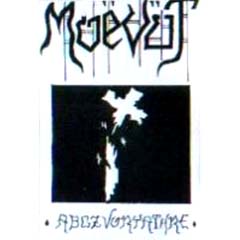 Every now and then, people who lack direction in life and so pay attention to surface features more than anything else, hoping to use these to justify their emptiness, will try to tell you how good a band is because it’s unique and nuanced. Usually this includes some kind of infantilism, like extreme minimalism or incoherence. This tedious little recording fits the bill. People like it because it’s obscure, kvlt, whatever… the truth is that it’s melodically simplistic, goes nowhere in song development, and showcases no really unique ability except to waste your time. They try to eat up as much tape as possible with intros, chants, and very basic keyboard melodies, but basically there’s nothing here. Maybe that’s the artistic point — emptiness — but then again a blank tape would have been more effective, and pleasant.
Every now and then, people who lack direction in life and so pay attention to surface features more than anything else, hoping to use these to justify their emptiness, will try to tell you how good a band is because it’s unique and nuanced. Usually this includes some kind of infantilism, like extreme minimalism or incoherence. This tedious little recording fits the bill. People like it because it’s obscure, kvlt, whatever… the truth is that it’s melodically simplistic, goes nowhere in song development, and showcases no really unique ability except to waste your time. They try to eat up as much tape as possible with intros, chants, and very basic keyboard melodies, but basically there’s nothing here. Maybe that’s the artistic point — emptiness — but then again a blank tape would have been more effective, and pleasant.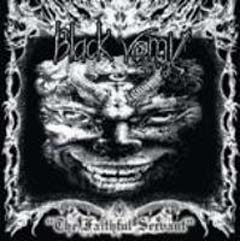 Interesting approach by this Mexican band: take a more technical version of the full speed burst style semi-melodic black metal that Sarcofago made, and intersperse it with flowing keyboard-enhanced choruses in the style of countrymen Xibalba and Avzhia. The result suffers from the radical shift between two very identifiable poles, but the music although very basic develops gently through this style, and as a result is more credible than most of what we get sent here at the Dark Legions Archive Metal Reviews and CD Recycling Center. This is a band worth keeping an eye on.
Interesting approach by this Mexican band: take a more technical version of the full speed burst style semi-melodic black metal that Sarcofago made, and intersperse it with flowing keyboard-enhanced choruses in the style of countrymen Xibalba and Avzhia. The result suffers from the radical shift between two very identifiable poles, but the music although very basic develops gently through this style, and as a result is more credible than most of what we get sent here at the Dark Legions Archive Metal Reviews and CD Recycling Center. This is a band worth keeping an eye on.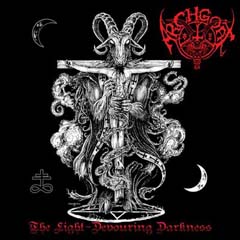 I’m convinced that a lot of contemporary death and black metal is music designed for children, because not only is it painfully simple and repetitive, but it also uses gentle rhythms of chord change — while playing at top speed. It’s like listening to a fan slowly playing an early Mozart piece. This album is similar. Sounds a lot like Blasphemy meets Impaled Nazarene, with the lower register production and slamming tempo changes of Belial. So as a retrospective of Finnish metal technique it’s great, but for anything else, it’s kind of a droning lullaby. What excuses it is that this CD shows purpose in its songwriting, and captures a mood, but for many of us the droning outweighs its significance.
I’m convinced that a lot of contemporary death and black metal is music designed for children, because not only is it painfully simple and repetitive, but it also uses gentle rhythms of chord change — while playing at top speed. It’s like listening to a fan slowly playing an early Mozart piece. This album is similar. Sounds a lot like Blasphemy meets Impaled Nazarene, with the lower register production and slamming tempo changes of Belial. So as a retrospective of Finnish metal technique it’s great, but for anything else, it’s kind of a droning lullaby. What excuses it is that this CD shows purpose in its songwriting, and captures a mood, but for many of us the droning outweighs its significance.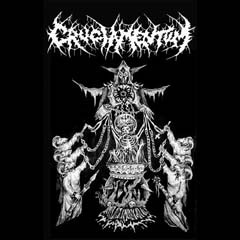 During the past two years, underground black metal shifted from emulating the early 1990s — fast melody — to emulating the late 1990s, specifically Demoncy’s “Joined in Darkness.” The Convocation EP does its best to revive that sound, with an injection of Finnish death metal and possibly American doom/death like Incantation, Winter and Infester. Although it keeps its goals limited, which is appropriate for a demo, this release shows promise in songwriting in that (a) every piece works together (b) together they create a vision of some idea, experience or emotion we can recognize from life itself and (c) while a good deal of it covers known death metal archetypes, it does so without borrowing straight from one source and so gives us a sense of exploring these ideas from a new angle. Low rasp voices, downtuned rigid guitars, and drumming that sounds like it’s straight out of drone/hardcore punk fusion gives this CD a sense of growing out of the past toward something even more ancient.
During the past two years, underground black metal shifted from emulating the early 1990s — fast melody — to emulating the late 1990s, specifically Demoncy’s “Joined in Darkness.” The Convocation EP does its best to revive that sound, with an injection of Finnish death metal and possibly American doom/death like Incantation, Winter and Infester. Although it keeps its goals limited, which is appropriate for a demo, this release shows promise in songwriting in that (a) every piece works together (b) together they create a vision of some idea, experience or emotion we can recognize from life itself and (c) while a good deal of it covers known death metal archetypes, it does so without borrowing straight from one source and so gives us a sense of exploring these ideas from a new angle. Low rasp voices, downtuned rigid guitars, and drumming that sounds like it’s straight out of drone/hardcore punk fusion gives this CD a sense of growing out of the past toward something even more ancient.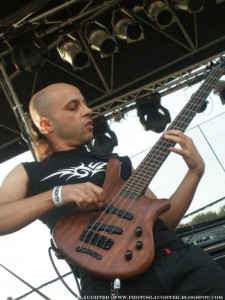 The early nineties was replete with Death Metal bands that are now legendary, contributing to the cult’s creative height, but largely from the now infamous concentration zones of northern Europe and across the Americas. This left several adjacent scenes with relatively little notoreity and condemned some first-rate albums to obscurity. Our review of Disaffected’s ‘
The early nineties was replete with Death Metal bands that are now legendary, contributing to the cult’s creative height, but largely from the now infamous concentration zones of northern Europe and across the Americas. This left several adjacent scenes with relatively little notoreity and condemned some first-rate albums to obscurity. Our review of Disaffected’s ‘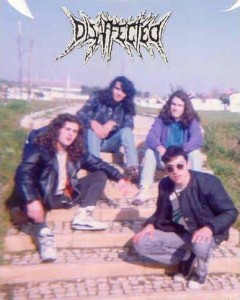 But in 2007, me and guitar player Sérgio Paulo, decided to reunite the band after 10 years of silence, and after a few meetings with the band members discussing a possible band reunion, the decision was “Let’s do it!!!”. A lot had passed with the band and the band members during these inactive years. Each had gone their own way in music and life. Due to the tragic accident of Sergio Paulo (guitarist) in 2004, all members got together again for the purpose of supporting a good friend. Sergio was lucky to survive a coma sleep of 2 weeks. His force of living had made him come back to us, and he had (literally) to restart his whole life, like being born again. He recovered most his abilities, and even his guitar mastery is back in 99%. A lot of things he had lost in his memory due to this accident, but he had never forgot DISAFFECTED music and his friends!
But in 2007, me and guitar player Sérgio Paulo, decided to reunite the band after 10 years of silence, and after a few meetings with the band members discussing a possible band reunion, the decision was “Let’s do it!!!”. A lot had passed with the band and the band members during these inactive years. Each had gone their own way in music and life. Due to the tragic accident of Sergio Paulo (guitarist) in 2004, all members got together again for the purpose of supporting a good friend. Sergio was lucky to survive a coma sleep of 2 weeks. His force of living had made him come back to us, and he had (literally) to restart his whole life, like being born again. He recovered most his abilities, and even his guitar mastery is back in 99%. A lot of things he had lost in his memory due to this accident, but he had never forgot DISAFFECTED music and his friends!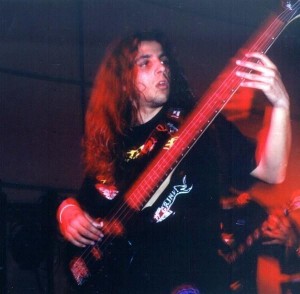 In 1994, I played bass guitar with a Jazz sextet featuring vocalist star Patrícia Fernandes, and we performed a show at Festa do Avante’94 (Seixal) in September of that same year. During the Summer ’97, I played bass guitar at Flood (Alternative Rock) as the support band of Santos & Pecadores Summer Tour ’97. In March ’02, in the aftermath of our Death Metal project Skinblade (1999-2002), me and drummer O decided to form a new band called Sybila, based on avant-garde style, and in December ’04, we entered Studio G22 (Feijó, Almada) with producer Paulo Vieira (Firstborn) to record the promotional song ‘Cycles’. The band split up in 2008 due to professional commitments of the musicians.
In 1994, I played bass guitar with a Jazz sextet featuring vocalist star Patrícia Fernandes, and we performed a show at Festa do Avante’94 (Seixal) in September of that same year. During the Summer ’97, I played bass guitar at Flood (Alternative Rock) as the support band of Santos & Pecadores Summer Tour ’97. In March ’02, in the aftermath of our Death Metal project Skinblade (1999-2002), me and drummer O decided to form a new band called Sybila, based on avant-garde style, and in December ’04, we entered Studio G22 (Feijó, Almada) with producer Paulo Vieira (Firstborn) to record the promotional song ‘Cycles’. The band split up in 2008 due to professional commitments of the musicians. 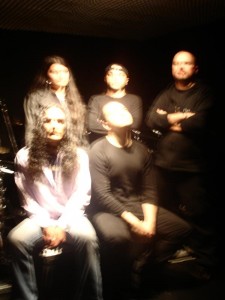 Gião: Musically, we intend to continue with the style that characterizes Disaffected, trying to explore new levels of music, sometimes melodic sometimes dissonant. In this new album the lyrical context consists in two parts. Part 1 with dark and obscure lyrics, showing the route of the band from the stop until the meeting, and then in Part 2 we will try to depict the rebirth of the band with lyrics more encouraging and positive. We’ll sign a new label contract too, but for now, we have nothing confirmed yet.
Gião: Musically, we intend to continue with the style that characterizes Disaffected, trying to explore new levels of music, sometimes melodic sometimes dissonant. In this new album the lyrical context consists in two parts. Part 1 with dark and obscure lyrics, showing the route of the band from the stop until the meeting, and then in Part 2 we will try to depict the rebirth of the band with lyrics more encouraging and positive. We’ll sign a new label contract too, but for now, we have nothing confirmed yet.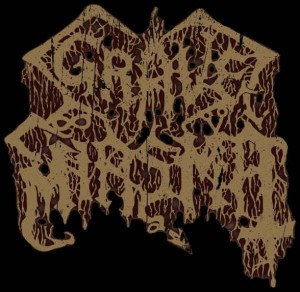 With the advent of another grim Autumn, half of the world retreats into glowing boxes of warmth and comfort to preserve the sickly and feverish Summertime langour. In a time where the seasonal rituals of harvest survives only as a novelty for urbanites and other moderns, for the sinister few, this is the season to step out into the growing shade of night and harvest the souls of the damned for they will be reborn into a new, unholy dawn. Such apocalyptic ends have necessitated a gathering of gargantuan proportions and could not be more appropriately named as the third ‘Black Mass Festival‘ in Helsinki later this week. Nefarious and astralic cults known to Hessians the world over, like Necros Christos, Sadistic Intent, Cruciamentum, Neutron Hammer, Lie in Ruins, and Death Metal legends, Demigod will be devastating the city and delivering winter even earlier than the Arctic already experiences it. Among such legions and Deathmetal.Org personnel in devout attendance will be London-based Death Metal occultists, Grave Miasma, making a similar journey to myself, but before our paths would re-intersect on the shamanic land of ancient Suomi, I posed a few questions to their guitarist and vocalist, the acronymious Heruka C.C.O.T.N., who seeks to re-ignite the dying embers of Death fucking Metal’s true fucking spirit on the very soil of the wider genre‘s birth.
With the advent of another grim Autumn, half of the world retreats into glowing boxes of warmth and comfort to preserve the sickly and feverish Summertime langour. In a time where the seasonal rituals of harvest survives only as a novelty for urbanites and other moderns, for the sinister few, this is the season to step out into the growing shade of night and harvest the souls of the damned for they will be reborn into a new, unholy dawn. Such apocalyptic ends have necessitated a gathering of gargantuan proportions and could not be more appropriately named as the third ‘Black Mass Festival‘ in Helsinki later this week. Nefarious and astralic cults known to Hessians the world over, like Necros Christos, Sadistic Intent, Cruciamentum, Neutron Hammer, Lie in Ruins, and Death Metal legends, Demigod will be devastating the city and delivering winter even earlier than the Arctic already experiences it. Among such legions and Deathmetal.Org personnel in devout attendance will be London-based Death Metal occultists, Grave Miasma, making a similar journey to myself, but before our paths would re-intersect on the shamanic land of ancient Suomi, I posed a few questions to their guitarist and vocalist, the acronymious Heruka C.C.O.T.N., who seeks to re-ignite the dying embers of Death fucking Metal’s true fucking spirit on the very soil of the wider genre‘s birth.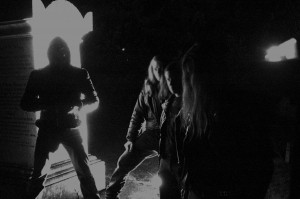 ObscuraHessian: Interest in more archaic forms of Death Metal is growing all around the world, as if returning to first principles and rediscovering our primordial selves. Consequently, as evidenced in your EP, the music is becoming esoteric like it used to be, wrapping dark and cosmic imagery in death-worshipping ‘theological’ statements. How important is esotericism in such a style and scene as Death Metal? Is it just a ‘thematic choice’ or something more?
ObscuraHessian: Interest in more archaic forms of Death Metal is growing all around the world, as if returning to first principles and rediscovering our primordial selves. Consequently, as evidenced in your EP, the music is becoming esoteric like it used to be, wrapping dark and cosmic imagery in death-worshipping ‘theological’ statements. How important is esotericism in such a style and scene as Death Metal? Is it just a ‘thematic choice’ or something more?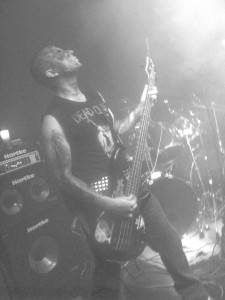 ObscuraHessian: There’s a lot of sounds from ‘Joined in Darkness‘-era Demoncy that surface in the music of ‘Exalted Emanation’, which adds a Black Metal flavour to it. Is this a favourite album of the band or are you more into Death Metal? Who would you say are your biggest musical influences?
ObscuraHessian: There’s a lot of sounds from ‘Joined in Darkness‘-era Demoncy that surface in the music of ‘Exalted Emanation’, which adds a Black Metal flavour to it. Is this a favourite album of the band or are you more into Death Metal? Who would you say are your biggest musical influences?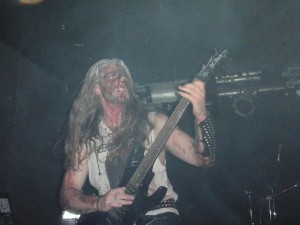 C.C.O.T.N.: To draw inspiration from my surroundings, I go out of London – often far indeed. Man is attuned with his surroundings, and living in this city is not congruent with the contemplation needed to collate this stimulation. I do find desolate urban areas during the dead of night to exude such sinister ambience, however. Whilst there are locations of Occult interest in the capital, other provinces of England are more relevant whether in regards to tangible brooding atmospheres or unseen power currents.
C.C.O.T.N.: To draw inspiration from my surroundings, I go out of London – often far indeed. Man is attuned with his surroundings, and living in this city is not congruent with the contemplation needed to collate this stimulation. I do find desolate urban areas during the dead of night to exude such sinister ambience, however. Whilst there are locations of Occult interest in the capital, other provinces of England are more relevant whether in regards to tangible brooding atmospheres or unseen power currents.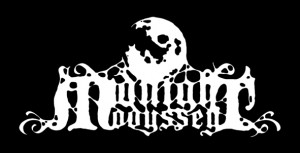 As much of the northern hemisphere is being overwhelmed by the onslaught of winter, the flames of Hell are rising to consume the south at summer’s peak. Still, the hardened souls of Black Metal warriors remain unfrozen, and Australia‘s Dis Pater from
As much of the northern hemisphere is being overwhelmed by the onslaught of winter, the flames of Hell are rising to consume the south at summer’s peak. Still, the hardened souls of Black Metal warriors remain unfrozen, and Australia‘s Dis Pater from 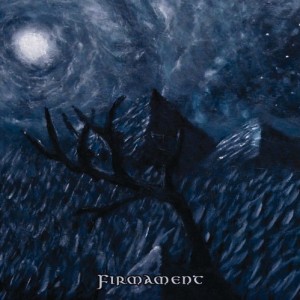 ObscuraHessian: The sound of the full-length is naturally better as there’s more space between instruments but you still managed to reflect an enclosed feeling which sounds like the music is passing through a million leaves and branches before it hits the listener. Did the demo receive any remastering before sent to be pressed for its forthcoming distribution?
ObscuraHessian: The sound of the full-length is naturally better as there’s more space between instruments but you still managed to reflect an enclosed feeling which sounds like the music is passing through a million leaves and branches before it hits the listener. Did the demo receive any remastering before sent to be pressed for its forthcoming distribution?
